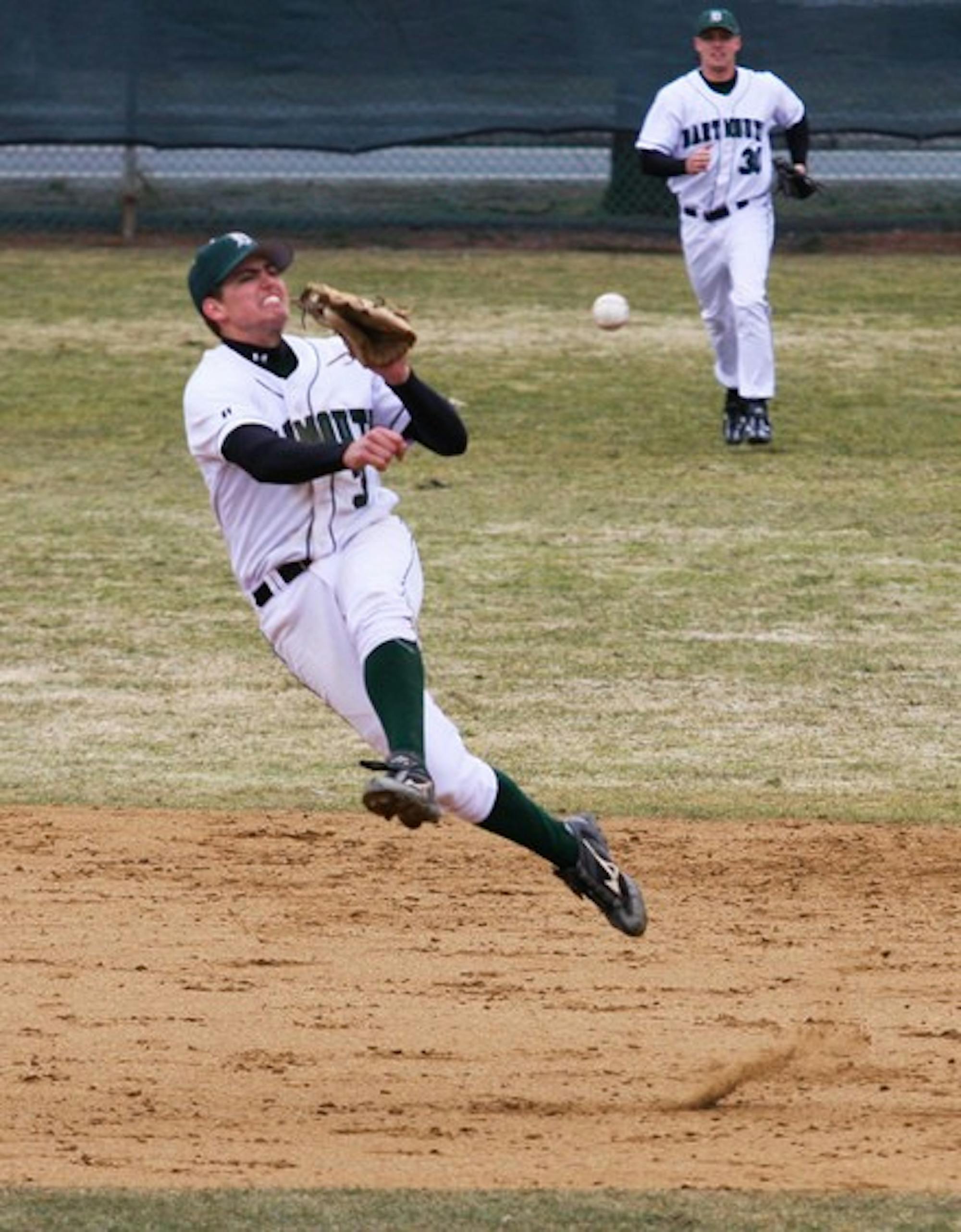The renovation, which has been in the works for several years, will convert the field from dirt and grass to a FieldTurf synthetic surface. The College also plans to construct new dugouts, stands, bullpens, fences and a press box behind home plate.
The new FieldTurf playing surface, is similar to the recently resurfaced Memorial and Scully-Fahey Fields, but is designed to reduce the "splash factor"--the spray of rubber pellets from the field when balls or other objects bounce off the surface.
"To the best of my knowledge, it's one of the best products out there specifically for baseball," head coach Bob Whalen said.
Although the infield and outfield will be one surface, the base paths will be a different color from areas that are traditionally grass to give players better depth perception and location awareness.
The switch to a turf field will reduce the amount of upkeep and maintenance required with a natural grass and dirt surface, and allow the baseball team to practice outdoors later in the fall and earlier in the spring.
In the past, the team practiced in Leverone Field House while it waited for the grass field to dry after the winter. In the event of a particularly long or harsh winter, the team would often have to move home baseball games to other Ivy League venues. The new turf should alleviate this problem, allowing the baseball team to practice outdoors immediately following its annual spring training trip.
Other improvements to the site are planned to increase the safety and comfort of players and spectators.
Currently, Red Rolfe Field is the only Division I NCAA baseball field without a warning track in left field. The renovations will add a warning track around the entire perimeter of the outfield.
The field's dimensions will also change -- the center field fence will be moved closer to home plate, and the orientation of the field will shift slightly towards left field.
The baseball program will also convert some of the space currently occupied by the basketball and tennis courts behind Leede Arena into batting cages and bullpens.
Much of the area surrounding the field will also undergo significant renovations. The current dugouts -- which are so narrow that teams must sit in two rows to fit everyone inside -- will be replaced with longer dugouts sunken into the ground, improving sight lines for spectators. Railings in front of the dugouts will protect players from errant foul balls.
The backstop, which is currently quite far behind home plate, will be replaced with a brick wall and netting, and a fully upgraded press box will be situated behind home plate. The new press box will divide radio announcers from reporters and the public address announcer and will be larger than the current press box on top of the visitors' dugout.
The Athletics Department also plans to upgrade the right field scoreboard. The current scoreboard is a recycled football scoreboard, and displays a football next to the competing teams' names. It will be replaced with a baseball scoreboard that displays the inning-by-inning score.
"It will all be a much friendlier, warmer, comfortable venue to watch the game while making it more user-friendly for the players," Whalen said.
Whalen, a self-proclaimed baseball purist, said that although he would love to continue to play on a grass field, the realities of northern New England weather made the prospect of a FieldTurf field much more practical.
"Coming down at seven in the morning to take the tarp off to get ready for a one o'clock game, so that they can work on the field to dry it out, no other athlete here has to do that," Whalen said. "When you add the whole thing together it just didn't make practical sense not to put FieldTurf in there...The realities of it just necessitated that we go in this direction."
Dartmouth is not the first Ivy League school to install a FieldTurf playing surface for baseball. According to Whalen, Columbia and Cornell just finished construction of FieldTurf baseball fields, and Princeton is considering a switch to FieldTurf.
Whalen refused to estimate a cost for the project, but said that construction was scheduled to begin this past Monday, although no construction has actually taken place. Barring any complications, construction of the playing surface is scheduled to be completed in time for the fall 2008 baseball season.




